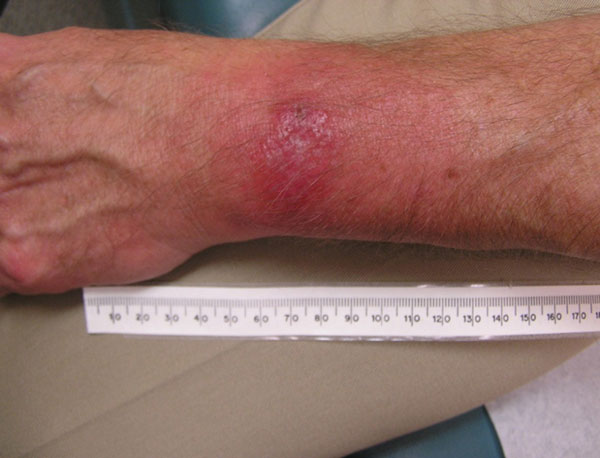Volume 19, Number 5—May 2013
Letter
Atypical Erythema Migrans in Patients with PCR-Positive Lyme Disease
Figure

Figure. . Atypical erythema migrans lesion on a patient with PCR-positive result for Borrelia burgdorferi infection. The rash was not considered typical because it lacked central clearing and peripheral erythema. The differential diagnosis included a contact dermatitis and arthropod bite. At the initial examination, this patient was seronegative for B. burgdorferi by 2-tiered criteria. Three weeks after therapy, the patient had positive results for ELISA and IgM Western blot and negative results for IgG Western blot, providing evidence of seroevolution (i.e., increasing antibody titer and/or increase in band intensity or appearance of new antigen bands to B. burgdorferi).
Page created: April 23, 2013
Page updated: April 23, 2013
Page reviewed: April 23, 2013
The conclusions, findings, and opinions expressed by authors contributing to this journal do not necessarily reflect the official position of the U.S. Department of Health and Human Services, the Public Health Service, the Centers for Disease Control and Prevention, or the authors' affiliated institutions. Use of trade names is for identification only and does not imply endorsement by any of the groups named above.